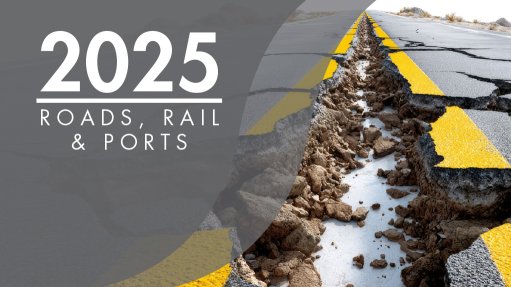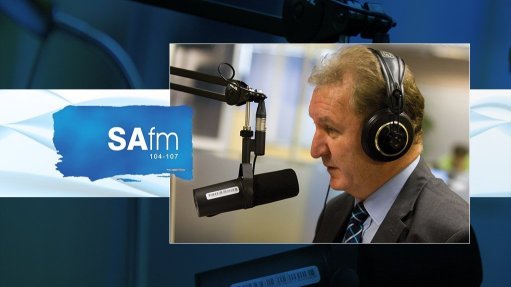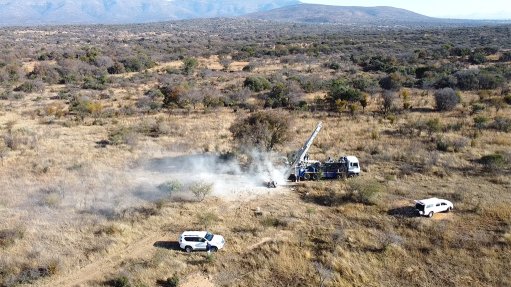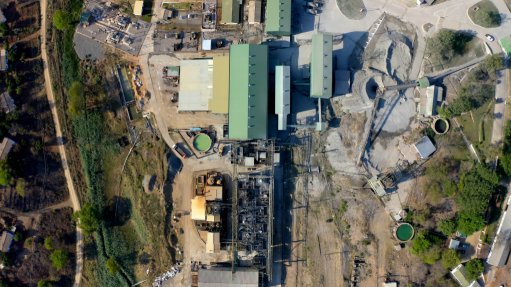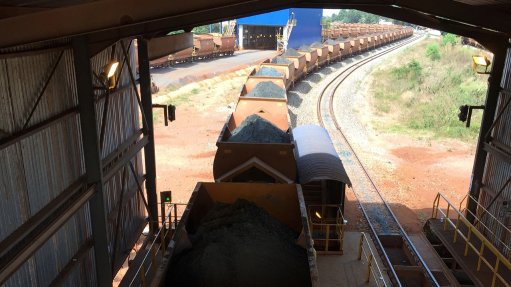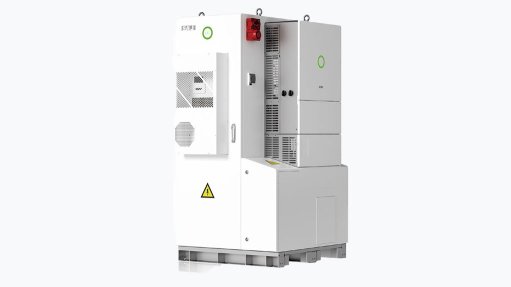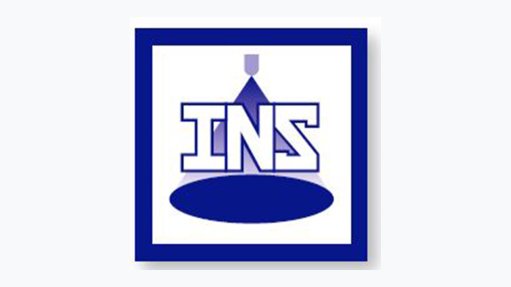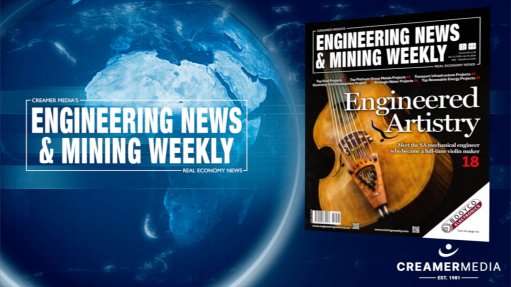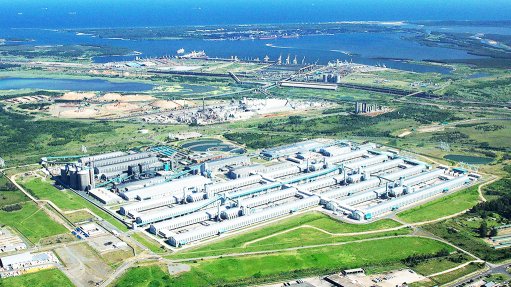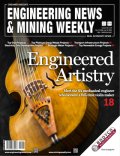IMARC 2025 Preview: Investors Look for Nuggets on Convention Floor
This article has been supplied.
By: Richard Roberts - Editorial Director, Beacon Events
Get your head around the “rare earths paradox”, keep an eye on the US Fed ... and copper, and mining tech, and be nice to your driller, are a few tips from seasoned investors attending this year’s International Mining and Resources Conference + Expo (IMARC) in Sydney.
Australia’s biggest annual mining event, featuring more than 100 junior mining companies and a bunch of rising tech stars in separate investment zones, will bring together leaders from some of the world’s top specialist investment firms to talk about what they’re seeing in somewhat chaotic world financial and metal markets. Names such as EMR Capital’s Jason Chang and Owen Hegarty, Appian Capital’s Dominic Raab, RFC Ambrian’s Rob Adamson, Lowell Resources Funds’ John Forwood and Orion Resource Partners’ John Dorian.
They will be joined by Far East Capital’s Warwick Grigor, Arete Capital Partners’ Campbell Olsen, RCF Innovation’s Charles Gillies, Marcus Today’s Henry Jennings, Kamoa Capital’s Scott North, Nero Resource Fund’s Russell Delroy and a host of other investors who are looking at mining from every conceivable investment angle.
With about US$95 billion of mining mergers and acquisitions announced or concluded so far in 2025 at the time of writing, including the proposed Anglo American-Teck megadeal, M&A continues to be a hot topic.
Forwood said the first half of 2025 saw an upsurge in M&A on the ASX, with A$15 billion of takeovers alone in period. Gold and copper dominated the deal space.
“Ever-depleting mining reserves, due to limited exploration success as a result of increasingly costly and time-consuming land access, means that acquisition will be the major component of a gold or copper producer’s growth story,” Forwood says.
“The gold price shows no signs of substantial pull-backs and so gold miners will continue growing their cash piles and share prices.”
Forwood says companies can invest surplus cash in projects, buy back hedge-books or return it to shareholders, “but the pipeline of junior companies with attractive operating or near-development assets will continue to attract the swollen wallets of the bigger goldfish”.
Lowell’s chief investment officer is one who has been highlighting constraints on mineral exploration spending and discoveries, saying, “it’s getting harder and harder for juniors to get drill permits and it can take years and hundreds of thousands of dollars to actually be able to get drill access for a project”.
“So, you've got to focus on projects which are more readily accessible,” he has told sector investors.
Kamoa Capital’s North recently highlighted the problem with a longer-term pullback in greenfield exploration spending in the industry, offset to a small degree by a modest rise in recent years in brownfield activity, wasn’t just what has become a sustained drop in significant new discoveries.
“Maiden resource announcements, the first official declaration of a new find, fell to 45 in 2024 from 77 in the previous year [in Australia],” he said.
“That’s a 41% decline in a single year. While some of these new discoveries were significant – including 494 tonnes of gold, 8.9 million tonnes of copper, and 7.8 million tonnes of rare earths – the trend is clear.
“Fewer swings of the bat mean fewer sixes.
“The link between greenfield exploration and lack of willingness to embrace bold, risk-aware exploration, means our discovery rates will continue to fall. Australia’s famed resource pipeline is in danger of becoming a mere optimisation pipeline; great for sustaining existing mines but terrible for finding the next Oak Dam or Sybella-scale rare earth deposit that will secure our future for decades to come.”
Fewer new discoveries and projects will also, of course, ultimately impact the company pipeline, something Forwood says we’re already seeing in Australia where recent copper M&A, for example, has “left the cupboard rather bare in terms of ASX-listed copper players”.
North thinks one way the industry can get better results despite spending less money is to be smarter with the bat. AI, he says, “won’t save exploration” but it has a much bigger role to play.
“Exploration isn’t broken,” he says. “It’s just running on 20th-century software.
“It now takes 40% longer to get from discovery to production than it did 15 years ago. Costs keep climbing. Success rates keep falling. And budgets [have been] flat for more than a decade.
“AI [is a] tool that can collapse the cycle time [as an agent in] faster prospectivity analysis, real-time drill core scanning, drone-based hyperspectral mapping; even automated permitting applications.
“The real opportunity is in using AI to stress-test our ideas. Imagine an algorithm that plays devil’s advocate on a drill target, or re-reads decades of reports to spot near misses everyone else has forgotten.
“All of it aimed at shrinking the lag between exploration spend and revenue.
“The race won’t be won by who drills the most metres. It’ll be won by who gets data-ready, scales AI, and closes the discovery-to-production gap.”
Rare earth paradox
One sector where Australia, Brazil and other countries have seen significant exploration success is rare earth elements (REEs), where Terra Capital head of research Dylan Kelly says recent US government intervention “has fundamentally altered the competitive landscape for rare earth production, creating economic incentives that address the longstanding Chinese cost advantage”.
Kelly urges investors to “separate fact from political fiction” when entering the world of critical minerals and nowhere is this advice more pertinent than in the REE space, which has been dominated by China along all sections of the value chain for decades.
IMARC will feature a number of the sector’s prominent players, including Arafura Resources, Australian Strategic Materials (ASM), American Rare Earths, Enova Mining and VHM.
Despite their name REEs are not rare, says Kelly, and are only valuable if separated.
“They are everywhere with moderate abundance in the Earth’s crust. But they are only useful if separated from each other with only four of the 17 [REEs] valuable if isolated: neodymium, praseodymium, dysprosium and terbium. But separation is the most formidable barrier to entry we have encountered across the commodity complex.
“We estimate a new vertically integrated mine and separation plant will take 10 years and cost about A$4 billion [US$2.6 billion. But there is no guarantee of success, let alone generating returns to justify the risk.
“In our view, competing with China head on makes little sense given the market structure. Particularly the price setting by a state-run duopoly.
“But recent news of the US DoD price floor with MP materials has potentially levelled the playing field.”
Technology in the investment spotlight
On the wider mining and metals tech front, 2025 has been a watershed year for M&A and financing with more than US$4 billion of deals announced so far. This is well up on the previous record year for mining/metals tech transactions in 2021 when circa-$3 billion of M&A and financing was recorded.
Charles Gillies, managing director of RCF Innovation, has been an entrepreneur and investor in the space for about 25 years and leads the mining innovation investment arm of multi-billion-dollar mining private equity investor, RCF.
“I think it’s a very interesting time for innovation in mining,” he says.
“All around the world we’re aware of the need for the mining industry to expand its production of critical minerals. If we want to decarbonise the world’s economy, move more towards electrification, we need more copper, nickel, cobalt; all of those special things.
“There is a lot of pressure on the mining industry to significantly increase the amount of material that it produces. In all other industries in the last 20 or 30 years there have been significant waves of innovation that have gone through industries which have helped them increase their productivity and reduce their costs to provide better outcomes for everybody.
“This is now occurring within the mining industry.
“The mining industry has been very good at adopting what I’d call large-scale innovation. All the driverless trucks and vehicles that we see now that people are super excited about ... have been in the Pilbara in Western Australia for 20 years. So the industry is innovative.
“But what we’re seeing more is innovation occurring at the small company level and this means that the mining industry is very comfortable looking for small companies with exciting pieces of innovation to make things work better.
“The overarching theme is anything that reduces cost, increases productivity and makes mining safer.
“Specifically, we’re seeing things in robotics ... There’s a lot of remote operation robotics in mining which helps to decrease cost and take people out of dangerous locations. We’re seeing advanced sensors and data analytics ... which means taking sensors, instrumenting some element of a mining operation and improving the way that it operates.
“We’re seeing AI of course – we see that everywhere. The important thing in the mining industry is it has to come with domain knowledge of what the outputs of those models tell you, which enables you to add value to the industry.
“Another area that is very important is electrification.
“And sustainability is also incredibly important. That’s about making mining cleaner. The social license to operate is critical for miners.”
Get out on the floor
Marcus Today’s Jennings urges small investors to get out among the resource companies at IMARC and talk face-to-face with executives about their projects and plans. “Sometimes you’ll get little nuggets,” he says.
“You do need to really know a company and get a feel for when the results are going to be out and when those assays are going to come through,” Jennings says on a recent webcast. Maybe also get to know a few drillers on a first-name basis, he suggested jokingly.
Amid a year of price rises for a number of commodities, Jennings says the outlook for the industry in general is positive.
“I personally believe we are in a resource boom,” he says. “That doesn’t mean we’re in a resource boom for every single commodity. Some commodities will be stuck in the slow lane.
“But I believe we’re in a resource boom and it has a long way to go because AI does require critical metals [and] rare earths. The whole defence sector, which is gearing up across the world, needs those resources.”
Forwood says his crystal ball is a bit cloudy.
“I think one of the big macro drivers is [US Federal Reserve chair] Jerome Powell leaving the Fed,” he says.
“That will happen in May 2026, or possibly before, and he will almost certainly be replaced by a Fed chair who is going to be much more amenable to cutting interest rates. I think that’s the overarching thing that’ll happen in the next 12 months.
“Lower interest rates in the US may be a sugar hit, but it will be good for both the gold price and junior resources.”
IMARC takes place from 21 - 23 October 2025 at ICC Sydney. Qualified investors can register for free at imarcglobal.com.
Article Enquiry
Email Article
Save Article
Feedback
To advertise email advertising@creamermedia.co.za or click here
Press Office
Announcements
What's On
Subscribe to improve your user experience...
Option 1 (equivalent of R125 a month):
Receive a weekly copy of Creamer Media's Engineering News & Mining Weekly magazine
(print copy for those in South Africa and e-magazine for those outside of South Africa)
Receive daily email newsletters
Access to full search results
Access archive of magazine back copies
Access to Projects in Progress
Access to ONE Research Report of your choice in PDF format
Option 2 (equivalent of R375 a month):
All benefits from Option 1
PLUS
Access to Creamer Media's Research Channel Africa for ALL Research Reports, in PDF format, on various industrial and mining sectors
including Electricity; Water; Energy Transition; Hydrogen; Roads, Rail and Ports; Coal; Gold; Platinum; Battery Metals; etc.
Already a subscriber?
Forgotten your password?
Receive weekly copy of Creamer Media's Engineering News & Mining Weekly magazine (print copy for those in South Africa and e-magazine for those outside of South Africa)
➕
Recieve daily email newsletters
➕
Access to full search results
➕
Access archive of magazine back copies
➕
Access to Projects in Progress
➕
Access to ONE Research Report of your choice in PDF format
RESEARCH CHANNEL AFRICA
R4500 (equivalent of R375 a month)
SUBSCRIBEAll benefits from Option 1
➕
Access to Creamer Media's Research Channel Africa for ALL Research Reports on various industrial and mining sectors, in PDF format, including on:
Electricity
➕
Water
➕
Energy Transition
➕
Hydrogen
➕
Roads, Rail and Ports
➕
Coal
➕
Gold
➕
Platinum
➕
Battery Metals
➕
etc.
Receive all benefits from Option 1 or Option 2 delivered to numerous people at your company
➕
Multiple User names and Passwords for simultaneous log-ins
➕
Intranet integration access to all in your organisation





